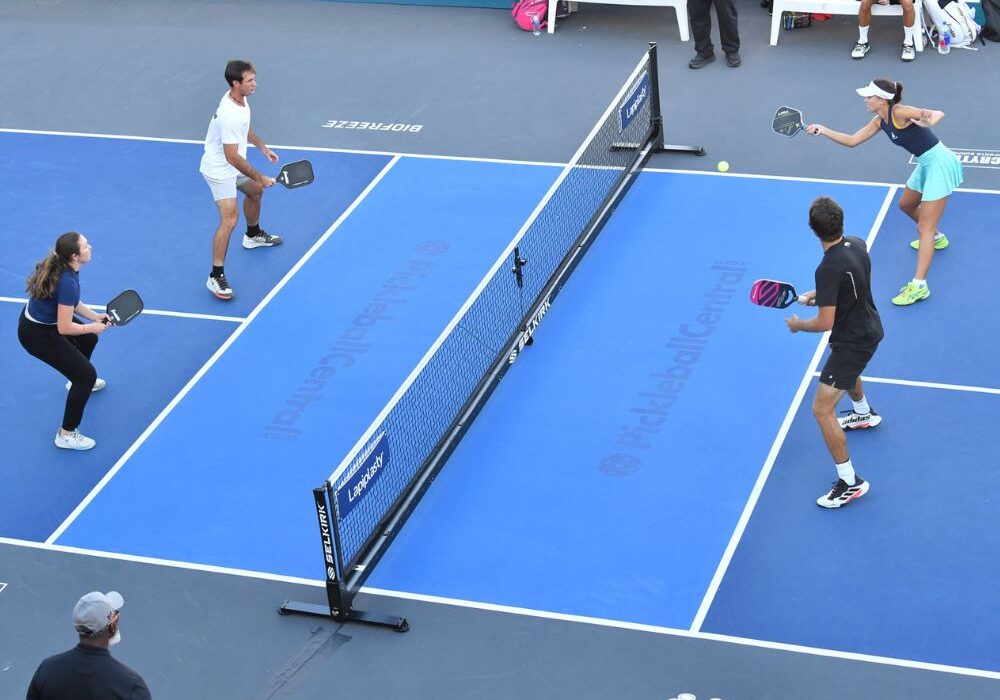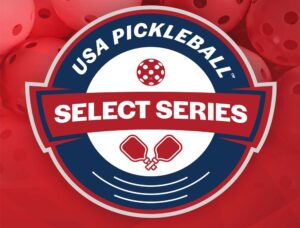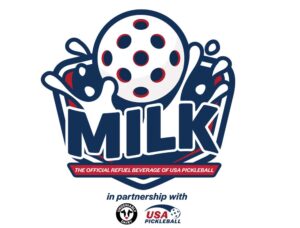In A Rapidly Growing Sport, Advanced Technology Is Helping Shape Future Pickleball Paddles
USA Pickleball’s Equipment and Evaluation Committee seeks to ensure a level playing field for players and manufacturers while still maintaining the integrity of the game.
By Bob Reinert
Red Line Editorial
Listen to Carl Schmits talk about spin rates and exit velocity, and you might think that you’re hearing someone discuss baseball pitchers and hitters. You’d have the wrong sport, however.
Instead, Schmits would be referring to pickleball paddles in his capacity as USA Pickleball’s managing director of equipment standards and facilities development. He and fellow members of the organization’s Equipment and Evaluation Committee, or EEC, take their responsibilities very seriously.
“Our objectives, of course, are to uphold, inform and enforce the objectives that our board (of directors) drives,” said Schmits, who has an extensive engineering and product development background. “Our board is tasked with ensuring that there’s fair play, that it’s a level playing field out there for both players and for manufacturers, and that really, in the end, the nature and integrity of the game is maintained.”
The fastest-growing sport in the U.S., pickleball has evolved a great deal since its inception in the mid-1960s. The sport’s equipment — including paddles — has also changed dramatically.
“We’re a fast-growing industry,” said Schmits, a former high-level racquetball player who has more than a decade of experience in pickleball. “Making right-hand turns too quickly, or major pivots, can have a significant ripple effect, so we do what’s achievable. And another important point is, what’s affordable?
“In our role, we make no sudden moves. We have to be data driven and then truly understand what the ramifications of a rule change might be so that we limit unintended consequences.”
It’s no small task in a sport where the early simple wooden paddles have been replaced by open-throat, molded-resin models that can cost upwards of $200.
“More exotic materials are being used,” Schmits said. “We are seeing that result in higher-priced equipment.
“If you’re very active in the sport, you know that there’s been a trend over the last couple years of an increasing number of paddles using a molded-resin surface. We see probably 50 percent of paddles now have that type of molded-resin surface, also referred to as ‘raw carbon’.”
Before the EEC was formed in 2015, pickleball’s rules and specifications were more subjective, Schmits said. Now, the committee, with the assistance of independent labs National Technical Systems (NTS), has taken a research-based scientific approach in making recommendations to the USA Pickleball board of directors.
“That was a quantum leap above where we were before,” Schmits said. “As time went on, we wanted to layer in more objective tests, which are data driven with measurable specifications.”
These days, the committee looks at many factors as more and more manufacturers race to enter this fast-growing sport.
“But it’s something that everyone wants,” said Schmits of his committee’s work. “We’re not mandating directions. It’s basically being driven by new materials, by new configurations.
“In 2019, we started to see the introduction of new textures and new coatings in the sport. There’s been continued innovation in that area requiring the introduction of a new standard.”
As Schmits pointed out, the EEC tries to determine where the industry is headed and have the right tests and standards in place to address anything that might push certain boundaries.
“Our two main concerns are power and spin,” he said. “Our labs have a significant experience in sports engineering. They’ve got a fairly broad suite of customers. It includes those in the sporting industry. They’ve got considerable experience in this space.”
The committee and the labs employ advanced tools in the process, including radar and high-frame-rate cameras.
“We scaled up a number of things,” Schmits said. “We’re really trying to increase our capabilities in terms of understanding the physics of the sport.”
Schmits noted that equipment advances don’t happen in a vacuum, as more world-class athletes gravitate to this dynamic game.
“I think there’s been two huge vectors that have helped change the game over the last few years,” Schmits said. “One of them’s definitely equipment. The other vector I was talking about is, frankly, the profile of the athletes.”
All the committee’s work plays out against the backdrop of what’s best for maintaining the integrity of this increasingly popular game.
“What we’ve seen is with higher spin rates comes the ability to hit harder and still keep (the ball) in court,” Schmits said. “We are dealing with a fixed chunk of real estate.
“I think we found a good balance there with the specifications and test standards put in place. We’re acutely aware that we need to stay on top of that, with development of new standards to address increasing power.”
Bob Reinert spent 17 years writing sports for The Boston Globe. He also served as a sports information director at Saint Anselm College and Phillips Exeter Academy. He is a contributor to USA Pickleball on behalf of Red Line Editorial, Inc.





